The Biggest UI/UX Trends of 2025: What’s Shaping the Future of Design?
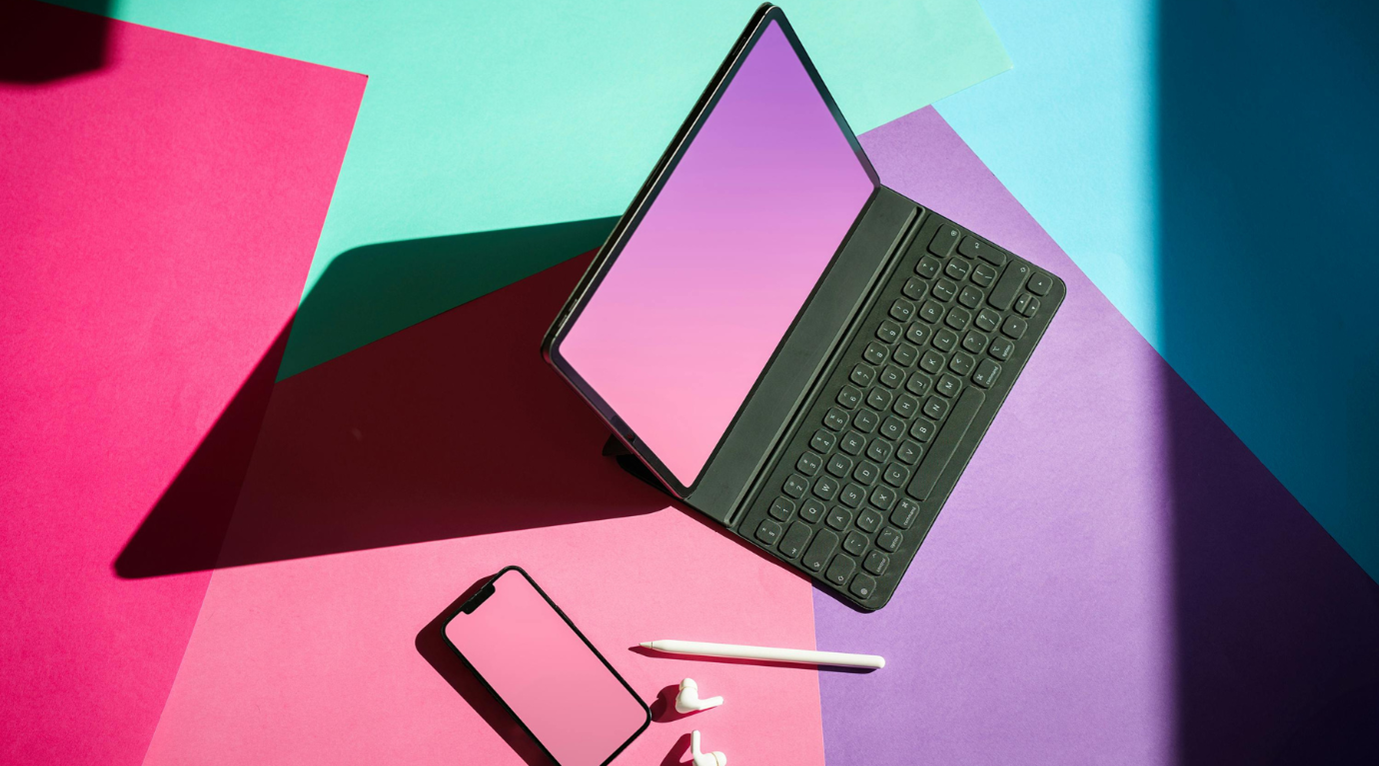
The landscape of UI/UX design is changing at an accelerated pace, driven by technological advancements, user expectations, and emerging design philosophies. In 2025, design will be more immersive, accessible, and AI-driven than ever before. Businesses that embrace these shifts will create intuitive, high-performing digital experiences that engage users and drive conversions.
Among these shifts, the role of colour theory continues to be essential, with concepts like the triadic colour scheme and trichromatic colour scheme being used to create visually balanced, high-impact designs. These colour strategies enhance contrast, improve accessibility, and ensure seamless user experiences across different devices and platforms.
In this article, we explore the most influential UI/UX trends shaping 2025 and how businesses can leverage them to stay ahead in the digital landscape.
1. AI-Powered Personalization and Adaptive Interfaces
Artificial Intelligence (AI) is revolutionizing UI/UX design by enabling real-time adaptations based on user behaviour, preferences, and interaction patterns. This dynamic personalization enhances user engagement, satisfaction, and loyalty.
Why It Matters
- Increased Engagement: Companies that excel at personalization generate 40% more revenue than those that don’t.
- Dynamic Personalization: AI-driven interfaces analyse vast amounts of user data—such as click patterns, browsing history, and location—to predict user needs and adjust elements like colours, layouts, and content in real-time, creating a more intuitive and satisfying user experience.
- Enhanced Customer Retention: Businesses leveraging AI-powered personalization see significant improvements in customer retention rates, as personalized experiences foster greater user loyalty.
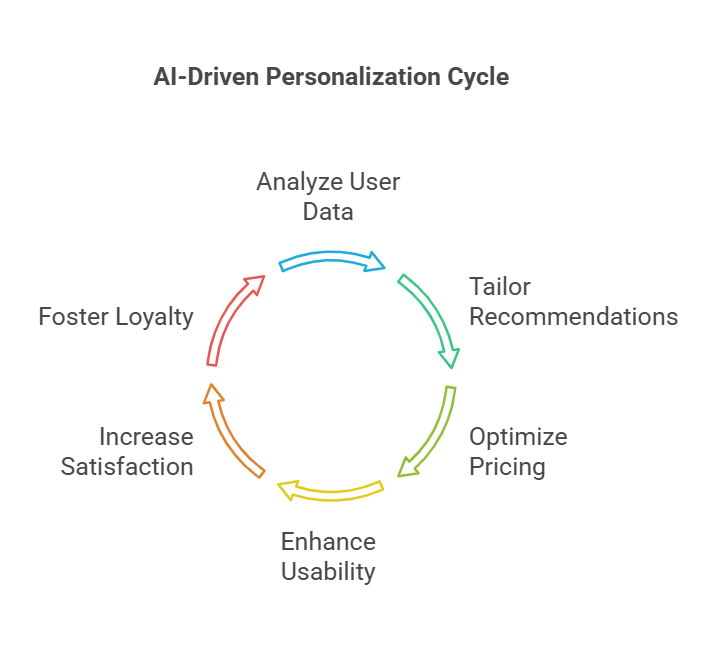
Example
Airbnb employs AI to personalize user experiences by analysing individual preferences and behaviours. This allows the platform to offer tailored accommodation recommendations, optimized pricing, and enhanced photo selections, thereby improving usability and engagement.
By integrating AI-driven personalization into UI/UX design, companies can create more engaging, user-centric experiences that adapt to individual needs, leading to increased satisfaction and loyalty.
2. Voice UI and Conversational Design
Voice User Interfaces (VUIs) and conversational design are transforming how users interact with technology, offering more natural, efficient, and scalable communication methods.
Why It Matters
- Widespread Adoption: Approximately 27% of the global online population uses voice search on mobile devices, indicating a significant shift towards hands-free interactions.
- Enhanced Customer Service Efficiency: Implementing conversational AI in customer service can significantly reduce resolution times. For instance, Lyft’s integration of Anthropic’s Claude AI assistant led to an 87% decrease in average customer service resolution time.
- Improved Accessibility: Voice-driven interfaces enhance accessibility for users with disabilities, offering a more natural and efficient mode of interaction.
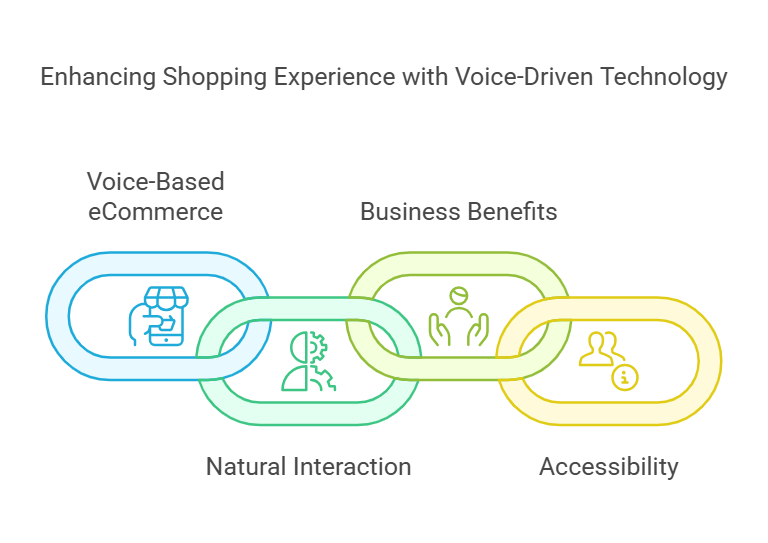
Example
Amazon’s Alexa has expanded beyond smart home devices into eCommerce, enabling voice-based product searches and purchases. This integration allows users to interact with online platforms more naturally, enhancing the overall shopping experience.
By embracing VUIs and conversational design, businesses can meet evolving user expectations, improve service efficiency, and make their platforms more accessible to a diverse user base.
3. Neumorphism 2.0: Enhanced Depth & Accessibility
Neumorphism, a design trend that blends minimalism and realism, has evolved into Neumorphism 2.0, addressing previous accessibility concerns by enhancing contrast and usability.
Why It Matters
- Improved Contrast and Clarity: Early neumorphic designs often suffered from low contrast, making interfaces challenging for users with visual impairments. Neumorphism 2.0 emphasizes increased contrast and clarity, ensuring that UI elements are more distinguishable and user-friendly.
- Hybrid Design Approach: By integrating soft shadows and gradients with flat design principles, Neumorphism 2.0 creates a sense of depth while maintaining simplicity. This approach enhances visual hierarchy and guides user attention effectively.
- Use of Triadic Colour Schemes: Implementing triadic colour schemes—three colours evenly spaced around the colour wheel—adds vibrancy and balance to the design. This method enhances visual depth and ensures that interfaces are both engaging and accessible.
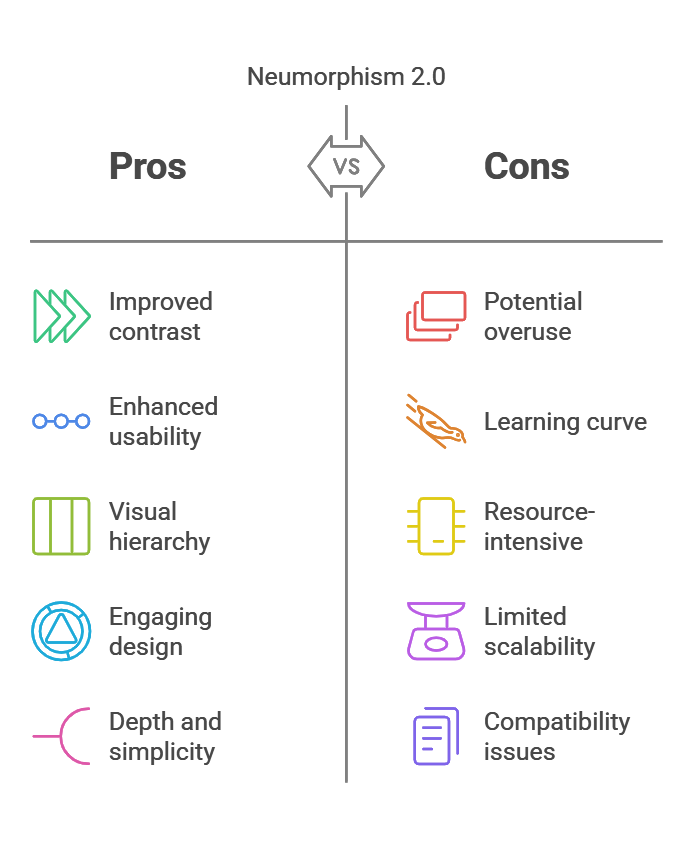
Example
While specific examples of Neumorphism 2.0 in major operating systems are limited, designers are increasingly adopting this style in various applications. For instance, some modern dashboards and control panels utilize neumorphic elements to create intuitive and aesthetically pleasing interfaces. These designs incorporate enhanced contrast and clear visual cues to improve usability.
By embracing Neumorphism 2.0, designers can create interfaces that are not only visually appealing but also accessible and user-friendly, catering to a diverse range of users.
Design the Future with Neuro Interactive
Stay ahead with AI-driven, immersive, and high-impact UI/UX solutions.
Let’s Talk4. Immersive 3D & Augmented Reality (AR) Interfaces
Immersive 3D and Augmented Reality (AR) interfaces are revolutionizing digital experiences by integrating interactive, real-world elements into virtual environments.
Why It Matters
- Enhanced Product Visualization: AR interfaces significantly improve product visualization, reducing purchase hesitation. For instance, 57% of users are more likely to buy from a brand offering AR experiences.
- Increased User Engagement: 3D UI elements enhance user engagement, particularly in eCommerce and gaming. Customers engaged with AR on an app spend 20.7% more time and view 1.28 times more products on average.
- Improved Purchase Confidence: Product purchases involving 3D and AR interactions have resulted in a 40% decrease in returns, showcasing the accuracy in expectations provided by immersive technologies.
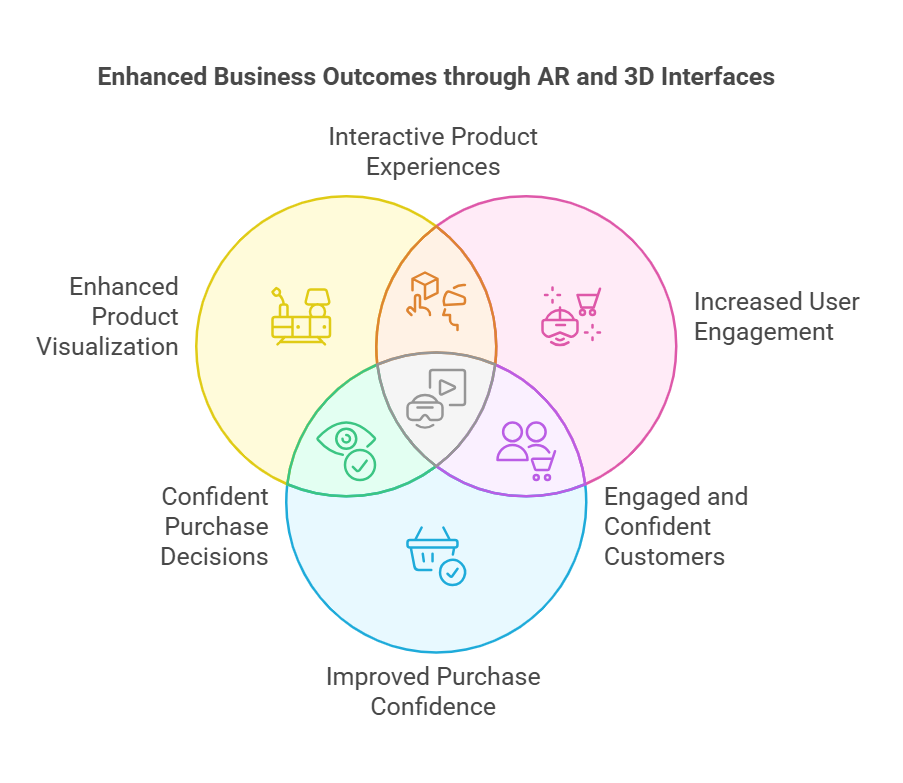
Example
IKEA’s AR-powered mobile app, IKEA Place, allows users to visualize furniture in their homes before purchasing. Customers who use the IKEA Place app are 11% more likely to complete a purchase compared to those who do not use the app.
By integrating immersive 3D and AR interfaces, businesses can enhance product visualization, increase user engagement, and improve purchase confidence, leading to higher sales and customer satisfaction.
5. Dark Mode 2.0 with Dynamic Contrast Adjustments
Dark Mode has become a staple in user interface design, offering a sleek aesthetic and potential benefits like reduced eye strain and energy savings. In 2025, Dark Mode 2.0 emerges with Dynamic Contrast Adjustments, enhancing readability and user comfort by automatically adapting contrast levels based on ambient lighting and screen content.
Why It Matters
- Growing Adoption: Dark Mode’s popularity has surged, with over 70% of consumers across all platforms choosing to use dark mode settings, suggesting a significant shift in user preferences.
- Enhanced Accessibility: Dynamic contrast adjustments in Dark Mode can improve readability for users with visual impairments. By automatically increasing contrast where needed, interfaces become more accessible, aligning with guidelines that recommend a contrast ratio of at least 4.5:1 between text and background.
- Reduced Eye Strain: Implementing dynamic contrast adjustments can help reduce eye strain, especially in low-light environments. By tailoring contrast levels to ambient conditions, users experience less discomfort during prolonged use.
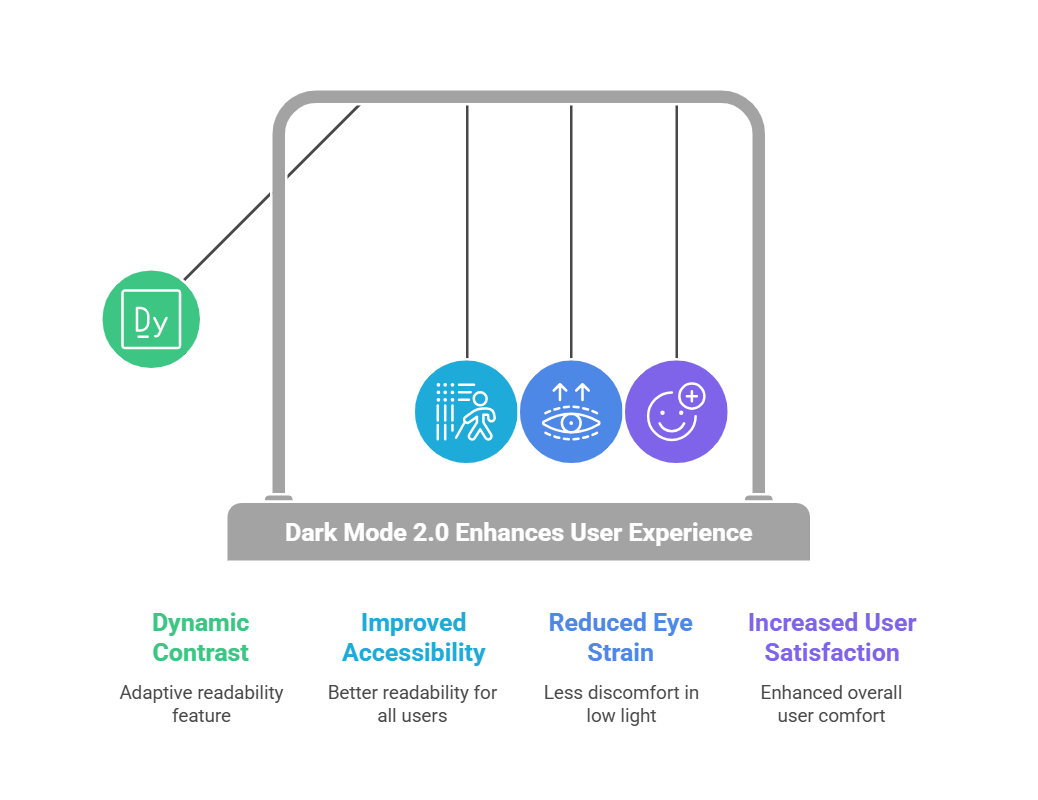
Example
Applications like Twitter and Slack have introduced features that automatically adjust dark mode contrast based on lighting conditions and screen brightness, enhancing user comfort and readability.
By adopting Dark Mode 2.0 with Dynamic Contrast Adjustments, designers can create interfaces that are not only visually appealing but also adaptable to individual user needs and environmental factors, leading to improved user satisfaction and inclusivity.
6. Microinteractions and Animated Gradients
Microinteractions and animated gradients are pivotal in modern UI/UX design, offering users immediate feedback and enhancing engagement through subtle yet impactful animations.
Why It Matters
- Enhanced User Engagement: Microinteractions provide real-time responses to user actions, creating a sense of direct manipulation and keeping users engaged. For instance, responsive animations can make interfaces feel more intuitive and enjoyable, encouraging users to explore further.
- Guidance and Learning: These subtle animations guide users through tasks, offering visual cues that reinforce actions and help users understand how to navigate the interface effectively. For example, a button changing colour upon interaction indicates its functionality, enhancing usability.
- Emotional Connection: Well-designed microinteractions can evoke positive emotions, making the user experience more enjoyable and memorable. This emotional engagement can lead to increased user satisfaction and loyalty.
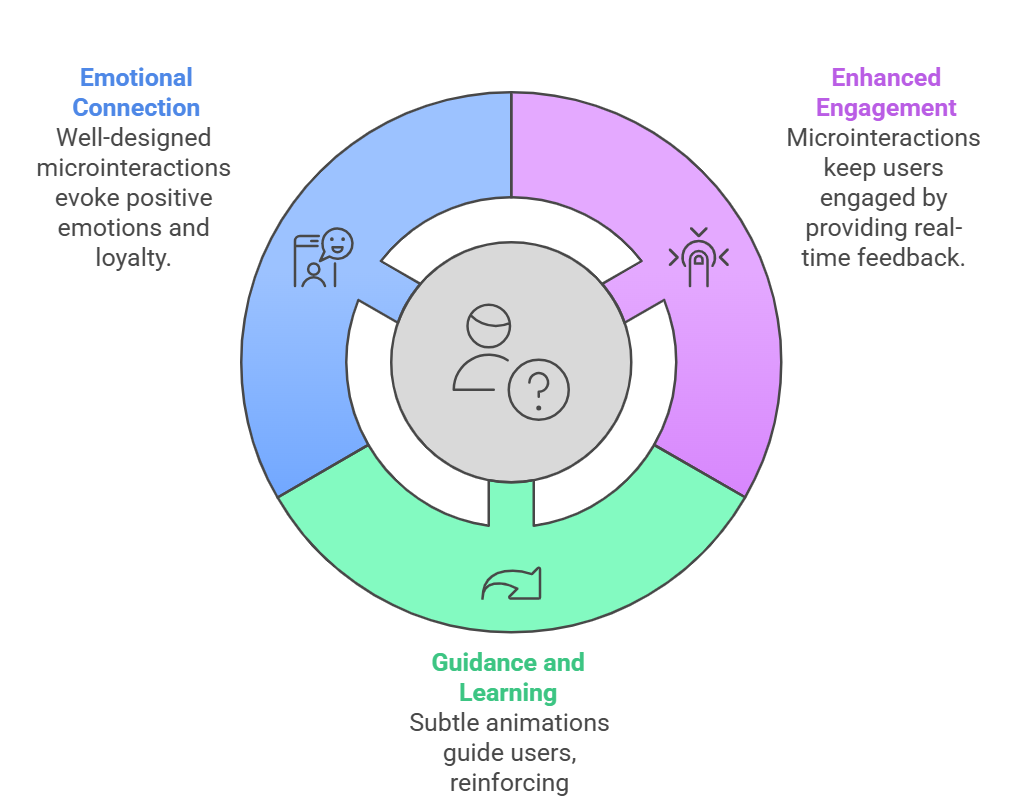
Example
Spotify’s annual “Wrapped” campaign exemplifies the effective use of animated gradients and microinteractions. The campaign presents users’ listening statistics through dynamic, colorful animations, creating an immersive storytelling experience. In 2020, this approach contributed to a 21% increase in Spotify’s mobile app downloads in the first week of December.
By integrating microinteractions and animated gradients, designers can create more engaging, intuitive, and emotionally resonant user experiences, leading to higher user retention and satisfaction.
Conclusion
Now that you’re aware of the key trends shaping UI/UX design in 2025, the question is—how will your business adapt? The rapid evolution of digital experiences demands not just awareness but action. From AI-driven personalization to immersive 3D interfaces and dynamic colour schemes, today’s leading brands are already redefining the way users interact with digital platforms.
As consumer expectations continue to rise, businesses that prioritize intuitive, accessible, and engaging UI/UX design will stand out in an increasingly competitive landscape. Whether it’s leveraging AI for real-time interface adaptations, embracing conversational design for frictionless interactions, or integrating advanced visual elements for enhanced engagement, the future belongs to those who innovate.
At Neuro Interactive, we specialize in crafting intelligent, high-impact digital experiences that align with emerging trends and user behaviour insights. Our expertise in colour theory, AI-driven design, and immersive interfaces ensures that every digital product we create is optimized for engagement, accessibility, and conversion.
The next era of UI/UX is here. Are you ready to design the future?
 Back
Back


